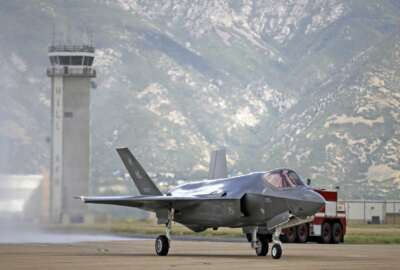
Second year of audits shows DoD getting better grasp of business processes
Although unresolved audit recommendations are growing, they're mainly the result of deeper examinations, according to DoD's inspector general.
After its first two years of full-scale financial audits, the Defense Department is starting to get some of its first concrete indications of how much work lies ahead of it before it can finally earn a clean audit opinion.
And according to DoD’s inspector general, there are clear signs of progress — though they’re not necessarily to be found in the number of audit findings the department has been able to fix. In fact, strictly on that basis, auditors are issuing and reissuing notices of findings and recommendations faster than DoD is resolving them.
In its newly-issued summary of the 2019 audit results, the OIG says it’s clear that more and more Defense organizations are drawing clearer linkages between their own business process and how they impact their audit results. And those sorts of steps are vital if the military services, agencies and combatant commands are going to eventually produce financial statements that auditors can sign off on, said Carmen Malone, the deputy assistant inspector general for audit.
“We can only audit what is presented to us — I can’t make up an audit test for something when I don’t know how it works,” she said in an extended interview about the findings for Federal News Network’s On DoD. “One of the things we noted in the first year, for example, was that there were different processes for the same component at different locations, and it didn’t match the documentation they handed us. It’s very hard to test something that when you’re handed a document that says, ‘This is how my process works,’ and when you go in and test, you find out that’s not how it worked at all.”
That tide is starting to turn, Malone said, as Defense organizations have increasingly realized the ongoing linkages between how they do business and their auditability.
“At U.S. Transportation Command, for example, they were actually able to explain many of their processes so well that we were able to do additional business process analyses. Last year we did maybe one or two tests in the revenue area. This year we were able to test 21 different revenue streams. So that will allow them to move further forward next year.”
And the fact that auditors were able to conduct more in-depth examinations in 2019 than they were in the prior year is a large part of the explanation for why the department’s tally of findings and recommendations grew in the second annual audit. Although the department was able to close 556 of the 2018 recommendations by the time the 2019 audit cycle ended, auditors issued 1,300 new ones and reissued almost 1,900 more.
The Pentagon has developed corrective action plans for each one, and in general, the OIG has found them to be credible. Malone said the main thrust has been that DoD components are trying to develop plans that make business sense, not just alter their habits for the sole sake of pleasing auditors.
“They’re not just focusing on fixing one problem, but they want to focus their efforts on sustainable business processes that are integrated into the everyday operations of the DoD,” she said. “If they develop this and put this into their everyday operations, it’s no longer thinking about, ‘What are we doing to support the audit?’ It’s, ‘What are we doing to be a more efficient and effective Department of Defense?’”
Copyright © 2024 Federal News Network. All rights reserved. This website is not intended for users located within the European Economic Area.
Jared Serbu is deputy editor of Federal News Network and reports on the Defense Department’s contracting, legislative, workforce and IT issues.
Follow @jserbuWFED
Related Stories





